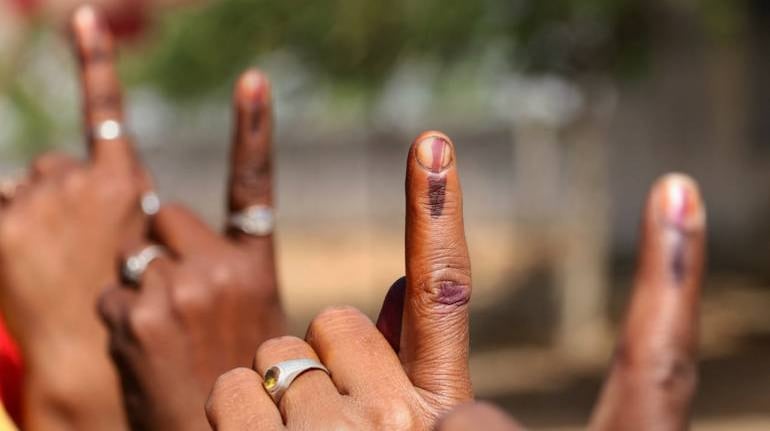



The turnout figures of an election do indicate something very important, i.e. the level of electoral participation of voters, but it is hardly an indication of a trend relating to possible electoral outcomes. The turnout in the recently concluded assembly elections in the three Hindi heartlands states and Mizoram, all of which registered a reasonably high turnout, does indicate the degree of interest voters showed in these elections. Telangana meanwhile saw a much lower turnout than 2018. But to me all of this does not give any indication of the electoral outcome.
There is a conventional wisdom of higher turnout being a sign of mood of the voters for change and lower turnout, support for status quo. But evidence does not support this conventional wisdom, neither for the national elections nor for the state elections including the states where voting has been completed. Evidence from past polls help us in bursting this myth.
Turnout And Anti-IncumbencyOf the 17 Lok Sabha elections held so far, the turnout increased in seven Lok Sabha elections. Three times the central government got re-elected while four times the government was thrown out of power. The turnout declined in seven Lok Sabha elections, but four times the government got defeated and three times the central government got re-elected. Clearly this evidence suggests that turnout hardly has a direct relationship with the electoral outcome.
Chhattisgarh registered 76.3 percent turnout this time compared to 76.4 percent during the 2018 assembly elections. Turnout had declined marginally by 0.8 percentage points during the 2008 assembly elections but the BJP government under Raman Singh got re-elected, but when it declined by almost a similar proportion in 2018, BJP lost the election.
In Madhya Pradesh, turnout has increased during ten assembly elections since the first assembly poll held in 1951. Of these ten elections which witnessed higher turnout, six times the government got re-elected while the government was defeated four times. The recent assembly election witnessed 77.6 percent turnout which is nearly two percentage points higher than 2018 which witnessed a 75.6 percent turnout.
Rajasthan registered 74.6 percent turnout this time when voting took place for 199 assembly constituencies. In 2018, turnout was 74.7 percent. Of various assembly elections held in Rajasthan, turnout increased in seven assembly elections while it declined in seven assembly elections. Of the seven times when turnout increased, the government got re-elected three times while the government was voted out four times. Similarly, of the seven elections when turnout decreased the government was voted back three times while the government was voted out of power four times.
Telangana registered 70 percent turnout this time compared to 73.4 percent during the 2018 assembly elections. But given that it is the youngest state and only two elections were held before this, we can leave out the state from our analysis.
But with such statistics as we saw for the three Hindi heartland states, can we say that higher turnout is a sign of anti-incumbency mood of the voters and lower turnout is a sign of pro-incumbency? Certainly not.
There has been a lot of attention on turnout in constituencies with a sizeable number of Muslim, Adivasi or Dalit voters. When these have registered higher turnout, it is interpreted as a sign of polarisation on religious and caste community lines. But a careful analysis of constituency wise turnout indicates these are mere perceptions.
Of the 50 assembly constituencies in the Rajasthan election where Muslim are more than 10 percent of total voters, turnout increased in 18 constituencies while it decreased in the remaining 32 assembly constituencies. There is hardly any evidence of assembly constituencies with sizeable Muslim voters registering higher turnout in 2023 compared to 2018 assembly election.
There is also a shared belief that Scheduled Tribes have voted in large numbers in Rajasthan as turnout has increased in assembly constituencies with sizeable ST voters. Analysis of data suggest, of the 40 assembly constituencies in Rajasthan with more than 20 percent Adivasi voters, turnout increased in 22 assembly constituencies and decreased in 18 assembly constituencies. The story is more or less the same with regard to the Dalit vote in Rajasthan. In 76 assembly constituencies with more than 20 percent Dalit voters, turnout increased in 30 assembly constituencies while it decreased in the remaining 46 assembly constituencies.
This detailed evidence of turnout from Rajasthan helps us understand a few things. One, let’s not be swayed by perception; try and look for evidence. Second, let’s not jump to any conclusion from the turnout figures either from an aggregate figure of turnout at state level or from disaggregated data of turnout at constituency level.
The turnout figure hardly gives us any indication of what may be the likely outcome of the electoral contest. It merely gives an indication whether voters have shown interest in these elections. The turnout in the recent round of assembly elections indicate that voters have shown interest and have participated enthusiastically in these elections.
Discover the latest Business News, Sensex, and Nifty updates. Obtain Personal Finance insights, tax queries, and expert opinions on Moneycontrol or download the Moneycontrol App to stay updated!
Find the best of Al News in one place, specially curated for you every weekend.
Stay on top of the latest tech trends and biggest startup news.